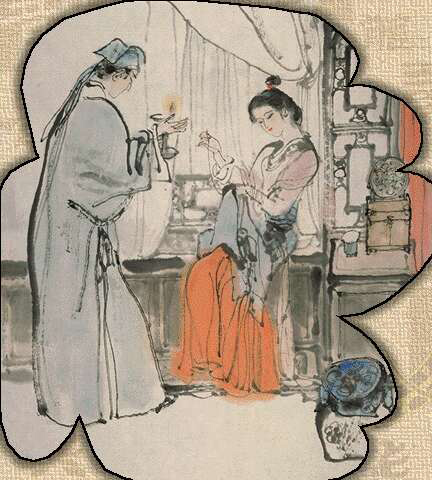Mythological images in shenguai fiction

An illustration from Strange Stories from a Chinese Studio
Shenguai fiction (the fictions of god and demons) in ancient China has a long history and is large in quantity. Despite different genres, creation concepts and narration styles shenguai fiction underwent during its development process, it always used mythological images as its major characters. Shenguai fiction should be one major subject for research on Chinese ancient fiction.
Inherent artistic principles
Currently, studies of shenguai fiction mainly focus on three aspects: studies of the history of fiction; studies of relations between shenguai fiction and religious cultures; and studies of masterpiece of shenguai fiction like Journey to the West and Strange Stories from a Chinese Studio. Publications on styles and artistic characteristics of shenguai fiction have also been seen in recent years.
On the whole, there has been much research on this literature phenomenon and its cultural backgrounds in different times. But there are insufficient studies on its artistic technique of featuring mythological images. Only with sufficient exploration in this respect can we interpret the internal law of the development of shenguai fiction from the perspective of its inherent artistic principles rather than from external cultural backgrounds, establish its unique artistic status and evaluation criteria by distinguishing the aesthetic characteristics of it featuring mythological images rather than real images, and ultimately understand the position of Chinese ancient fiction in world literary history and its impact on modern literary creation.
Varing styles in different periods
Theoretical exploration of shenguai fiction can be carried out from two angles. The first angle is to compare shenguai fiction created in different periods and from different cultural backgrounds, centering on major issues occurring at different development stages of shenguai fiction.
For example, zhiguai (fiction of the miraculous), one school of shenguai fiction, displays varied characteristics in different periods which can be ascribed to diversified cultural backgrounds and religious beliefs. Therefore, to examine relations between cultural backgrounds and religious beliefs in different periods, regions and groups and creation of zhiguai fiction can greatly facilitate the discussion of development and evolution of this literary phenomenon.
Unique artistic technique
The other angle is to inquire into the artistic principles applied in shenguai fiction drawing upon phenomena and issues appearing with regularity in creation process of shenguai fiction to discover its narrative modes and aesthetic characteristics. The source material for writing shenguai fiction is not ordinary ones, rather it is a system of images for fictionists to observe, elaborate on, and give free rein to their imagination. Therefore, we should pay close attention to those mythological images when examining the art of shenguai fiction.
Today, people have made significant progress in understanding ancient literature. Accordingly, theoretical interpretation of artistic traditions of shenguai fiction should also improve. We should examine shenguai fiction as a whole in history and take the adoption of mythological images as a unique artistic technique, to analyze its inner dynamics of development and its values in literary history.
